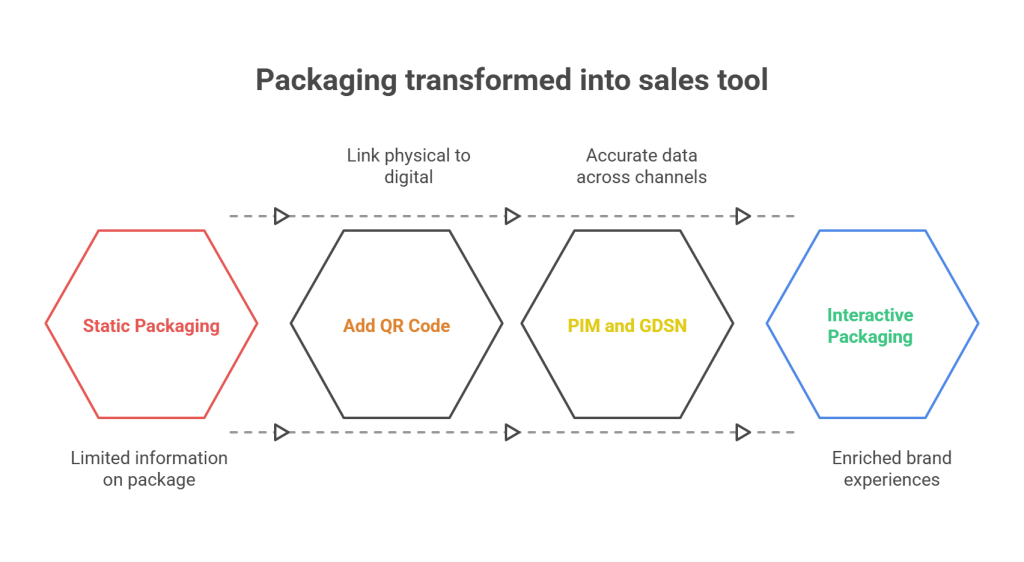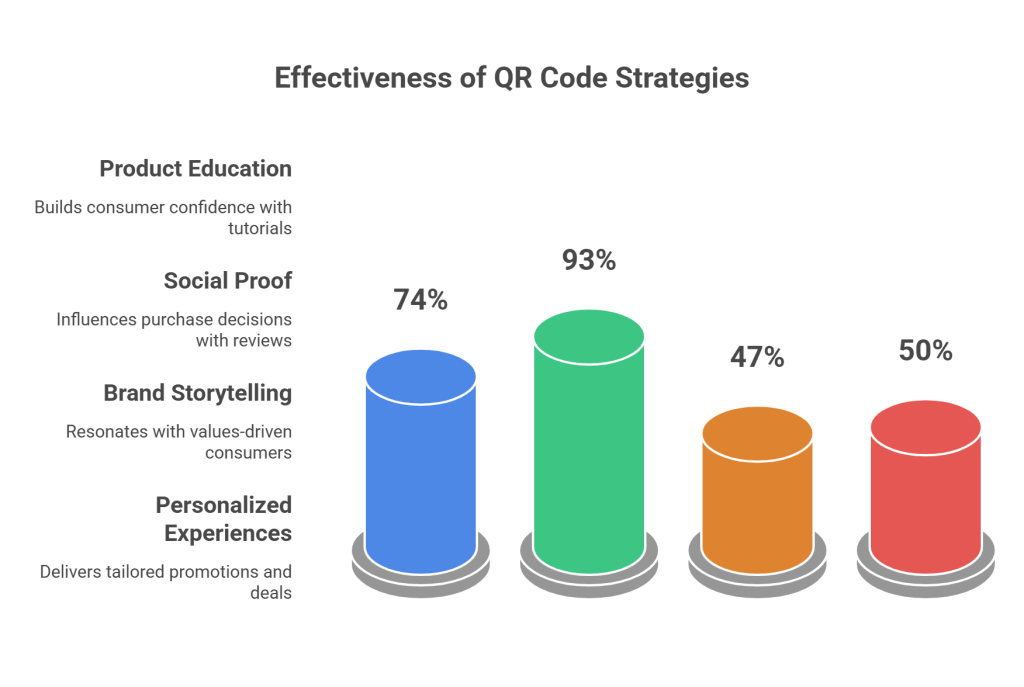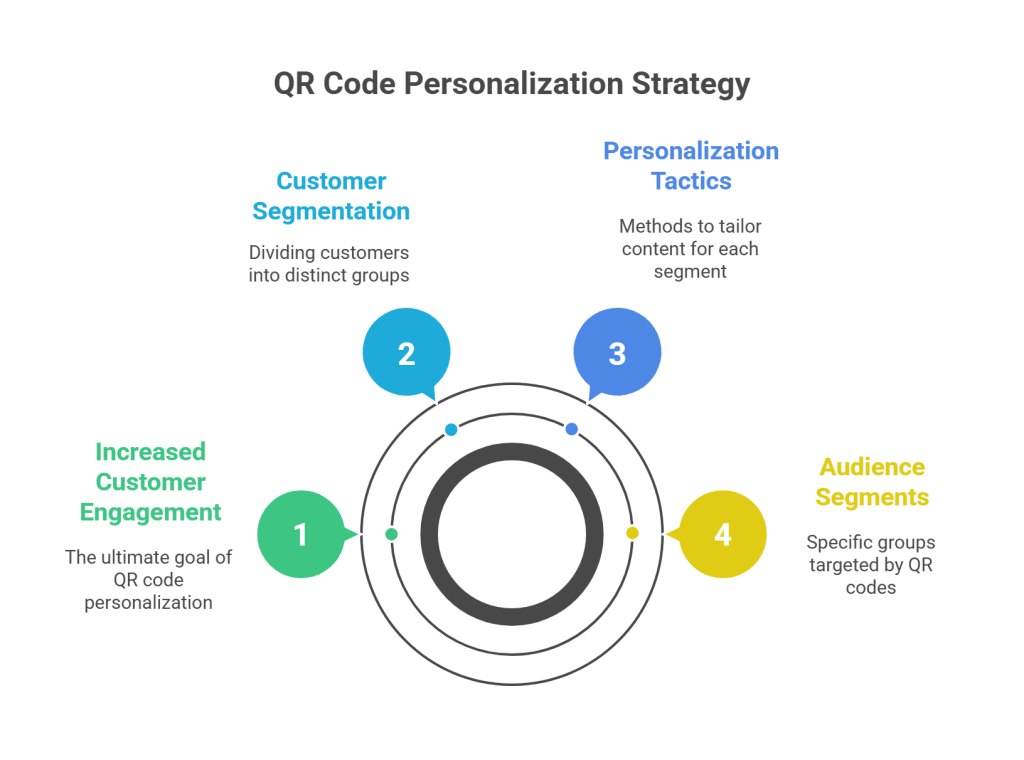Introduction
QR codes on product packaging have revolutionized how consumers interact with brands while shopping. Surprisingly, 64% of consumers have scanned a QR code while shopping in-store, with packaging influencing repeat purchases for 59% of shoppers. This powerful connection between physical products and digital experiences is changing retail landscapes across industries.
When we examine the benefits of QR codes in retail settings, the potential becomes clear. These simple square patterns bridge the gap between in-store shopping experiences and rich online content, giving customers instant access to product specifications and reviews in real-time. Additionally, research shows that 93% of shoppers say ratings and reviews impact their purchasing decisions, making QR code shopping a valuable tool for brands seeking to boost sales.
In this blog, we’ll explore how implementing QR codes on packaging can significantly increase in-store sales, examine successful strategies used by leading brands, and provide practical guidance for creating your QR code strategy that drives results.
Key Takeaways
- QR codes on packaging drove a 47% sales increase by connecting physical products to digital experiences that 64% of shoppers actively use in-store
- Four proven strategies maximize QR effectiveness: educational videos, social proof reviews, brand storytelling, and personalized customer experiences
- Smart segmentation targeting first-time buyers versus loyal customers increases engagement by 80% through relevant, tailored content delivery
- Leading brands like Oatly, Absolut, and Danone prove QR codes build trust through transparency, personalization, and product traceability
- Robust product content management through PIM and GDSN systems ensures consistent, accurate QR code content across all retail channels without reprinting packaging
- The key to QR code success lies in treating packaging as an interactive gateway rather than static information. When brands combine strategic content with proper data management, QR codes become cost-effective tools that strengthen customer relationships while driving measurable sales growth in today’s connected retail environment.
How QR Codes Turned Packaging Into a Sales Tool
Packaging has evolved from merely protecting products to becoming a crucial sales tool. In the current competitive retail environment, packaging no longer safeguards a product—it tells a story, builds trust, and creates meaningful connections with consumers. Furthermore, research shows that packaging influences repeat purchases for 59% of consumers, making it an essential component of marketing strategy.

1. Why Packaging Matters More Than Ever
Today’s consumers are increasingly interested in product origins and brand values. According to research from MG2, Gen Z specifically seeks curated visual merchandising experiences where a brand’s values shine through in physical environments. Essentially, packaging has become the first touchpoint in building relationships with potential customers.
The “less is more” approach continues gaining traction as brands streamline their designs. This minimalism trend allows customers to focus on what’s essential: product information. Consequently, brands need intelligent solutions to provide comprehensive details without cluttering their packaging.
2. The Shift From Static Labels to Interactive Content
Connected packaging began with simple QR codes that bridged physical products and online content. Initially, brands used these codes as add-ons for additional information, like product details or exclusive discounts. However, as mobile technology improved, so did the potential for connected packaging.
Modern packaging has evolved from static labels to interactive experiences. Approximately 86.66% of UK smartphone users have scanned a QR code at least once, with 36.40% doing so weekly. This upward trend highlights the growing synergy between print and digital, driven by demand for contactless experiences and increased smartphone usage.
3. How QR Codes Bridge Physical and Digital Retail
QR codes provide an instant digital gateway from physical products to enriched brand experiences. With a single scan, consumers gain access to:
- Product provenance and sustainability credentials
- User instructions and tutorials
- Exclusive offers and loyalty programs
- Augmented reality experiences
- Feedback and customer service portals
This technology particularly benefits companies facing stringent regulations. From France’s environmental labeling laws to the EU’s Digital Product Passport, global regulations increasingly require brands to share detailed information with consumers. Since packaging space is limited, QR codes solve this challenge by connecting users to all required details through a single scan.
For brands implementing these codes, Product Information Management (PIM) and Global Data Synchronization Network (GDSN) solutions are vital. These systems ensure accurate, consistent product data across all channels, making QR code implementation more effective and manageable. By centralizing information through PIM and GDSN, brands can seamlessly update content without changing physical packaging, ensuring information stays relevant throughout a product’s lifecycle.
The 4 Most Effective QR Code Strategies that Drove 47% More Sales
Implementing strategic QR codes on product packaging has demonstrated measurable success for brands across industries. Research shows that two-thirds of customers are willing to switch to brands offering more in-depth product information. Through analyzing high-performing QR code campaigns, four distinct strategies emerge as particularly effective.

1. Product Education Through How-to Videos and Demos
QR codes create immediate connections to educational content without crowding packaging. These digital gateways provide shoppers access to instructional videos, demos, and tutorials that showcase product applications. For beauty products, QR codes highlight ingredient sourcing and application techniques. This approach builds consumer confidence, as 74% of consumers say ratings and reviews are key ways to learn about unfamiliar products.
2. Social Proof via Reviews and User-Generated Content
Social proof remains the top factor influencing purchase decisions, with 93% of shoppers reporting that ratings and reviews impact whether they buy a product. Smart brands use QR codes to connect packaging directly to customer testimonials, photo galleries, and review collections. This transforms static packaging into a gateway to community validation, helping shoppers make confident decisions faster.
3. Brand Storytelling With Mission-Driven Content
Modern consumers increasingly care about what’s behind products: brand values, sustainability practices, and production methods. QR codes provide space for founders to share compelling origin stories that resonate with customers. Forbes notes that “Stories have the power to grab attention, connect with emotion and persuade us to take action”. Unlike traditional labels with limited space, QR codes link to comprehensive storytelling experiences that evolve alongside the brand.
4. Personalized Experiences Through Quizzes and Recommendations
Interactive QR codes transform packaging into personalized marketing tools. Major brands like the NBA and Kraft Heinz use QR codes to deliver customized promotions and seasonal deals based on customer profiles. Interactive elements like quizzes can extend customer relationships beyond single purchases by providing tailored product recommendations. This approach enables smart routing to send different content based on customer location, time, or demographics.
Real-World Examples of QR Code Packaging Success
1. Oatly
Packaging to communicate their environmental commitment with concrete data. By 2024, 78% of their global sales volume featured climate footprint declarations, calculated using LCA methodology. Their packaging QR codes connect consumers directly to sustainability content, revealing how their oat drinks produce 44-80% lower climate impact than cow’s milk. This transparency reinforces their brand identity while satisfying consumer demand for verifiable sustainability claims.
2. Absolut Vodka
Absolut transformed their bottles into interactive gifting experiences through unique QR codes. In 2024, they launched personalized “phygital” bottles in Italy that enable collaborative gift-giving. Friends can collectively craft celebratory messages using voice notes, written text, photos, and emojis. Recipients simply scan the code and point their device at the bottle to reveal these personalized messages in augmented reality. This innovative approach merges physical products with digital experiences, creating memorable moments that extend beyond consumption.
3. Danone
Danone addressed consumer concerns about baby formula authenticity with their Track & Connect program. Their dual-QR code system places one code on the outer packaging and another behind a tamper-resistant seal. This allows consumers to verify product authenticity and trace the formula’s journey from manufacturing through the supply chain. Initially launched in China, the program expanded to France, Germany, Australia, and New Zealand, responding to research showing that 69% of consumers want detailed information about how their food is made.
GDSN and PIM: Supporting QR code success
Product Information Management (PIM) and Global Data Synchronization Network (GDSN) solutions are essential for effective QR code implementation. These systems ensure consistent, accurate product data across all touchpoints, enabling brands to update digital content without changing physical packaging.
Trusted by 3000+ BrandsHow to Segment and Personalize your QR Code Content
Effective QR codes on product packaging go beyond simple links to create targeted, relevant experiences for different customer segments. Nearly 80% of businesses reported increased customer engagement through personalization. By segmenting customers strategically, brands can deliver content that resonates with specific audiences at different stages of their journey.

1. First-Time Buyers vs. Loyal Customers
Smart marketers break QR code campaigns into three distinct audience segments for maximum impact. For first-time buyers (low intent), codes on billboards or TV commercials create awareness with lower expected activation rates. Medium-intent customers—those already visiting retail locations—receive codes on in-store signage to drive app adoption. Meanwhile, high-intent existing customers benefit from personalized QR codes on receipts, product packaging, or takeaway bags that offer exclusive rewards based on purchase history.
2. Regional and Cultural Customization
Geographic customization amplifies QR code effectiveness. For international audiences, localizing QR code content based on region and language preferences creates more relevant experiences. Moreover, enterprise QR code solutions allow campaigns tailored to specific regions without changing the physical code. This approach enables brands to address cultural nuances while maintaining consistent packaging across markets.
3. Lifestyle-Based Content Targeting
Beyond demographics, effective QR code strategies segment customers based on behaviors and preferences. For instance, a fitness equipment brand might use smart QR codes to provide personalized workout tutorials and equipment guides. These codes create evolving narratives—an initial scan might register a product and provide seasonal content, while subsequent scans deliver maintenance tips or accessory recommendations as the ownership experience matures.
Commport Datapool Solutions, GDSN and PIM can help you centralize, enrich, and sync your product data to both internal teams and external marketplaces including retail and online stores. These systems ensure accurate, consistent information across all channels, making dynamic QR codes particularly powerful. With proper data management, brands can update QR code destinations without reprinting packaging—reducing costs while keeping content fresh and relevant.
Conclusion
QR codes have undoubtedly transformed product packaging from simple protection to powerful sales tools. Throughout this article, we’ve seen how these small square patterns bridge physical and digital retail experiences, giving customers instant access to product information and brand stories.
Behind every successful QR code implementation lies robust data management. Commport Datapool Solutions, GDSN and PIM can help you centralize, enrich, and sync your product data to both internal teams and external marketplaces including retail and online stores. These systems ensure your QR codes deliver consistent, accurate information regardless of where customers encounter your products.
The future of retail clearly includes QR codes as essential components of packaging strategy. Whether you’re a small brand or global enterprise, QR codes offer an affordable, scalable way to extend your packaging’s value beyond the physical shelf. Therefore, brands that embrace this technology now will gain significant advantages in customer engagement, trust, and ultimately, sales growth in the increasingly connected retail landscape.
Commport GDSN Datapool Solution
Download: GDSN Buyers Guide
Empower your business with global data synchronization; download our GDSN Buyer's Guide today and take the first step towards streamlined, accurate, and compliant product data management.
Frequently Asked Questions
QR codes on product packaging have shown to increase in-store sales by up to 47%. They provide instant access to product information, reviews, and brand stories, which helps customers make informed purchasing decisions.
QR codes bridge the gap between physical and digital retail experiences. They offer customers immediate access to detailed product information, how-to videos, customer reviews, and personalized content, enhancing the shopping experience and building brand trust.
Brands are using QR codes for various purposes, including product education through videos and demos, showcasing social proof via reviews, sharing brand stories, and offering personalized experiences through quizzes and recommendations.
Yes, QR codes can be used to validate product authenticity and traceability. For example, Danone uses a dual-QR code system on their baby formula packaging to allow consumers to verify product authenticity and trace the product’s journey through the supply chain.
Businesses can segment QR code content based on factors such as customer loyalty (first-time buyers vs. loyal customers), regional preferences, and lifestyle interests. This personalization can lead to increased customer engagement and more relevant experiences for different audience segments.





